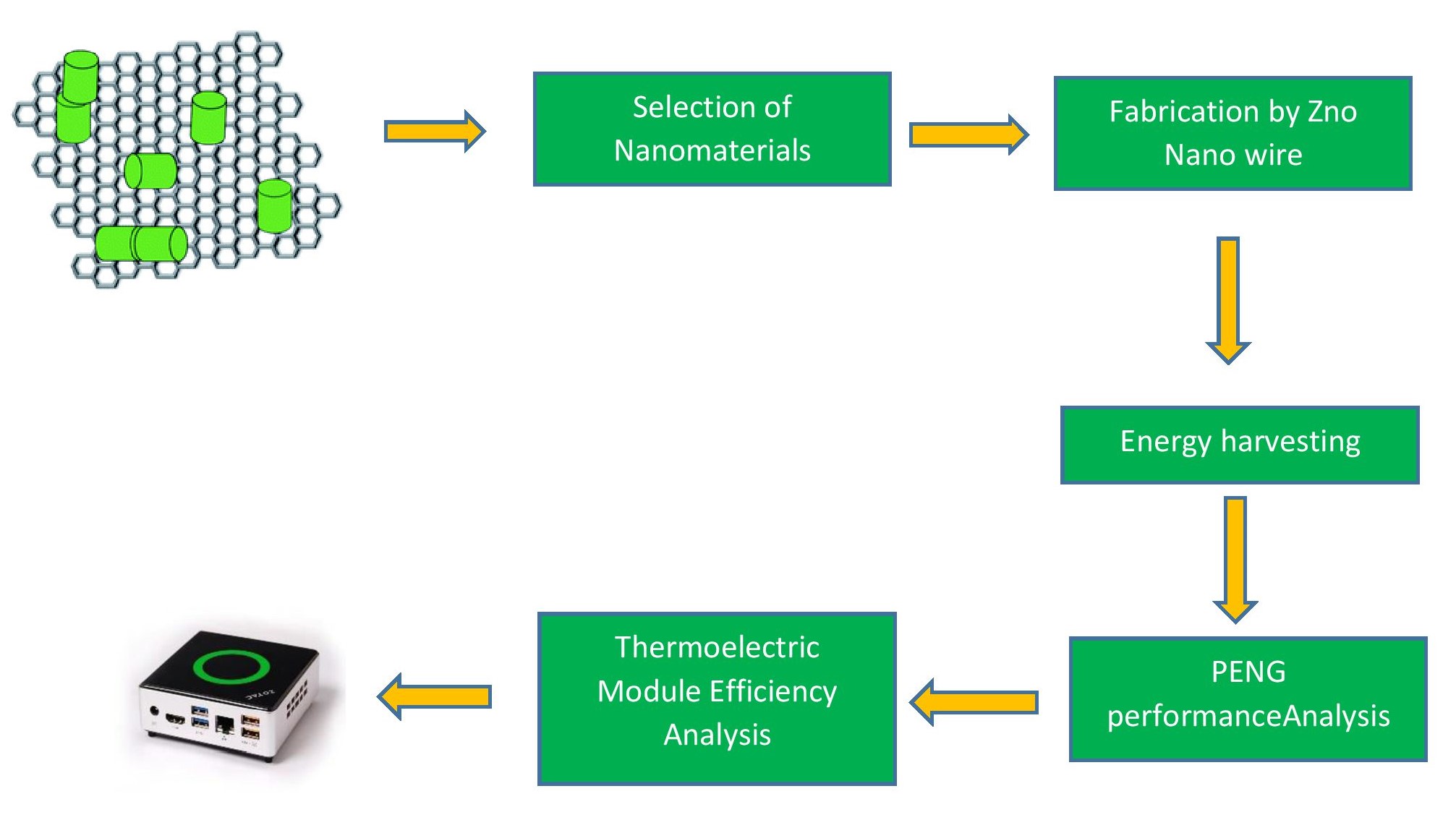
The utilization of ambient energy sources for powering small-scale electronic devices and sensors has garnered significant attention due to its potential for sustainable and autonomous operation. This research focuses on enhancing the efficiency of energy harvesting from ambient sources, such as vibrations, heat differentials, and electromagnetic fields, through the integration of advanced materials and nanotechnology into energy harvesting systems. The study begins with a comprehensive review of existing energy harvesting technologies, highlighting their limitations in terms of efficiency, scalability, and adaptability to various ambient energy sources. It identifies the key challenges faced in achieving high energy conversion rates and explores the potential of advanced materials and nanoscale structures to address these challenges. One aspect of the research involves the development and characterization of novel materials with superior energy conversion properties. This includes the synthesis of piezoelectric materials for vibration energy harvesting, thermoelectric materials for heat-to-electricity conversion, and nanomaterials for enhancing electromagnetic energy harvesting efficiency. Advanced characterization techniques, such as scanning electron microscopy (SEM) and X-ray diffraction (XRD), are employed to analyze the structural and electrical properties of these materials. Furthermore, the study investigates the design and fabrication of nanostructured energy harvesting devices optimized for specific ambient energy sources. This involves the integration of nanoscale components, such as nanostructured electrodes, into energy harvesting systems to improve energy capture and conversion rates. Finite element analysis (FEA) simulations and experimental testing are conducted to evaluate the performance and efficiency of these nano-enhanced energy harvesting devices under real-world conditions. The research also addresses the optimization of energy harvesting system parameters, including resonance tuning, impedance matching, and energy management circuits, to maximize energy extraction and utilization. Computational modeling techniques, such as multiscale modeling and finite element simulations, are utilized to optimize system configurations and improve overall energy harvesting efficiency. Overall, this research contributes to the advancement of energy harvesting technologies by leveraging advanced materials and nanotechnology, paving the way for sustainable and autonomous power generation from ambient energy sources for a wide range of applications.
Total file downloads: 45